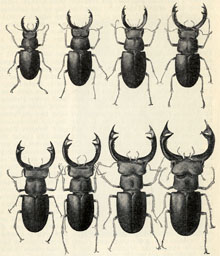Darwin in the Interwar Years

In the 1930s, the leading Darwin-biographer Geoffrey Wells wrote that now the whole story of Darwin was known and basically nothing new would be added to it. The assumption was that Darwin’s Life and letters and his Autobiography along with additional books containing family correspondence and drafts of his theory of evolution comprised a sufficient and comprehensive foundation for understanding his life and his theory.
In the 1980s and 90s, historians have strongly emphasized how the Darwinian theory of evolution was outshined scientifically by the now sound and professionalised genetic theory during the first three decades of the 1900s. In this story, the so called neo-Darwinian synthesis – the integration of the theory of evolution and genetics - from a central turning point was seen as the final introduction of the modern worldview that we have lived with since.
However, recent historical research shows that we should be careful in interpreting the neo-Darwinian synthesis as a scientific revolution which quickly convinced the entire scientific community of its validity. Moreover, Darwin’s continued significance as an important icon in the biological sciences has been played down in favour of an image of a theory in the midst of a crisis.
During the Inter-War years, Darwin was very much a unifying figure for the biological sciences, not least as a reaction and bulwark against the new creationist movement which started in the United States and spread to Great Britain during the 1920s. Generally, scientists viewed this as a threat against the entire scientific educational system and thereby, the foundation of the modern world. From the beginning, Darwin was one of the most important weapons for the committed scientists in the fight against creationism. For them the preservation of the heroic image of Darwin was essential.
Peter C. Kjærgaard









